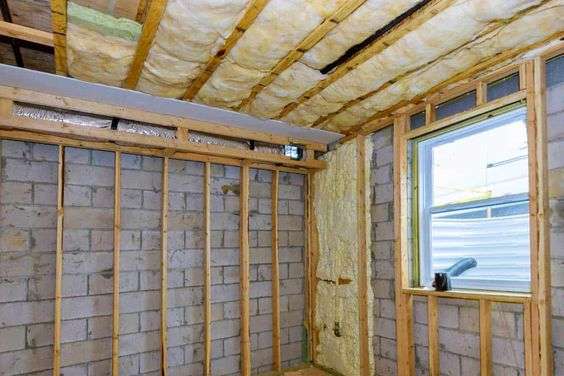The Ultimate Basement Insulation Guide

Ever wondered why insulating your basement matters? Well, it’s not just about keeping your basement cozy—it’s also about saving energy and preventing issues, such as mold and occupant discomfort. In this article, we’ll explore why insulating your basement is a smart move, the different types of insulation you can use, and the easy ways to install them.
.
Why Basement Insulation is important?
Insulating your basement is like giving it a warm, cozy hug. It helps keep the temperature
steady, stops moisture from creeping in and prevents harmful gasses or pollutants from entering your home. This makes your basement more comfortable, whether you’re using it as a living space, storage area, or just a recreational area
Benefits of Basement Insulation
Keeps You Warm: Insulation acts like a cozy blanket, trapping heat inside your basement during the cold months and keeping it cooler in the summer. This means you’ll spend less on heating and cooling, which saves you money on energy bills.
Stops Moisture: Basements can be damp places, which can lead to problems like mold and mildew. Insulation creates a barrier that keeps moisture out, preventing these issues and keeping your basement dry and healthy.
Saves Energy: When your basement is properly insulated, it helps keep the rest of your home warmer in the winter and cooler in the summer. This means your heating and cooling systems don’t have to work as hard, which saves energy and reduces your carbon footprint.
.
Types of Basement Insulation
Foam Board Insulation: Foam boards are like big, sturdy pieces of foam that you can attach to your basement walls. They’re easy to use and do a great job of keeping heat in and moisture out.
Fiberglass Insulation: Fiberglass Insulation comes in fluffy rolls or blankets that you can stuff between the studs in your basement walls. It’s cheap, effective, and easy to install.
Spray Foam Insulation: Spray foam insulation is like magic foam that expands to fill every nook and cranny in your basement walls, perfect for sealing up gaps and cracks.
Rigid Insulation Panels: Rigid insulation panels are like big, stiff sheets of foam that you can glue or nail to your basement walls. They’re super durable and provide excellent insulation.
.
Installation Methods
Inside or Outside: You can install insulation on the inside or outside of your basement walls, depending on your needs and budget. Installing it on the outside is more effective at keeping your basement warm.
Vapor Barrier: In cold climates, it’s important to install a vapor barrier along with your insulation. This helps prevent moisture from seeping into your walls and causing problems. Make sure to install it on the warm side of the insulation to keep your basement nice and dry.
Sealing Cracks: Before you install insulation, make sure to seal up any cracks or gaps in your basement walls. This helps prevent drafts and makes your insulation work more efficiently.
Insulating your basement is a smart investment that pays off in many ways. Not only does it keep your basement warm and cozy, but it also saves energy, prevents moisture problems, and improves the overall comfort and health of your home. With different types of insulation to choose from and easy installation methods. So go ahead, grab some insulation, and make your basement the best it can be!
